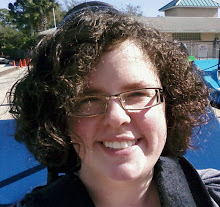 Speculate: When designing, the designer speculates measurements and how the final product is to look. They start out with a design or inspiration, then work from that to come up with the structure in the end. Guadet wrote that the first requirement in designs is to understand the function of the building and to accommodate it fully (Roth 501). He also said “you will seek character, which contributes to beauty by creating variety” (Roth 501). Both of these mean that a designer needs to speculate how the structure will be used and then add character or beauty to accentuate the function.
Speculate: When designing, the designer speculates measurements and how the final product is to look. They start out with a design or inspiration, then work from that to come up with the structure in the end. Guadet wrote that the first requirement in designs is to understand the function of the building and to accommodate it fully (Roth 501). He also said “you will seek character, which contributes to beauty by creating variety” (Roth 501). Both of these mean that a designer needs to speculate how the structure will be used and then add character or beauty to accentuate the function.

 Compose: When designing a structure or composing a piece of art, the designer or artist needs to arrange all parts to make up the final result. Composure is important in an artwork or structure because all aspects are linked together and flow throughout the space. Guadet wrote “Composition must be good first, but it must be beautiful as well. You must therefore compose a building with a view towards its usefulness and its beauty” (Roth 501).
Compose: When designing a structure or composing a piece of art, the designer or artist needs to arrange all parts to make up the final result. Composure is important in an artwork or structure because all aspects are linked together and flow throughout the space. Guadet wrote “Composition must be good first, but it must be beautiful as well. You must therefore compose a building with a view towards its usefulness and its beauty” (Roth 501).Energize: A space needs to have a certain energy so that the viewers can reflect on their own emotions how to evaluate the space. A designer designs with a certain lighting or celebration that sets the mood and gives the space the energy that they are trying to portray. In the late Baroque and Rococo architecture, the colors arise not so much from the natural weathering of materials but from applied paint that must periodically be renewed (Roth 81). Nonetheless, such environments have reinstituted a measure of vivacity and energy, which was suppressed by the austerity of International Modernism in the mid-twentieth century (Roth 81).
 Shape: Every structure always has a shape, whether it be a box with four walls and corners or the Disney Concert Hall with many different curves and sections. The designer or architect decides on the shape and then moves through many different construction techniques to form it to that shape. Shape can also be influence by the use of the space. An alternative is to design a building so that any possible future activity can be accommodated (Roth 6).
Shape: Every structure always has a shape, whether it be a box with four walls and corners or the Disney Concert Hall with many different curves and sections. The designer or architect decides on the shape and then moves through many different construction techniques to form it to that shape. Shape can also be influence by the use of the space. An alternative is to design a building so that any possible future activity can be accommodated (Roth 6).Stretch: When designing a structure, the designer needs to compensate for stretching over the years. Much like an item of clothing stretches over time, a building can also stretch. Years of wear and tear can have major effects on structure. They begin to erode and crack as the earth moves. So a designer or architect needs to design keeping in mind the eventual harm to the structure over time.












